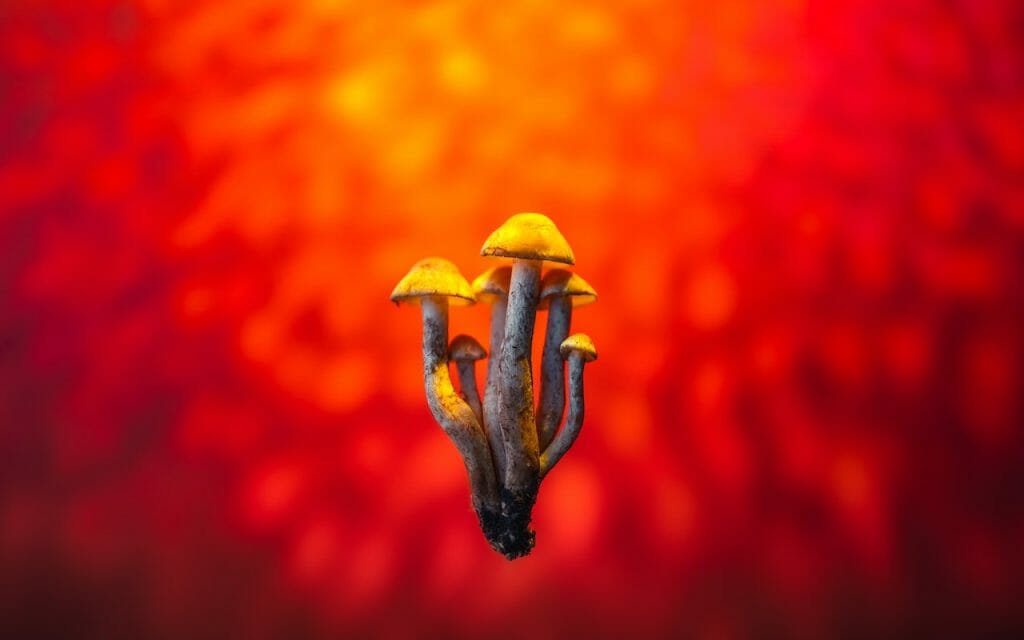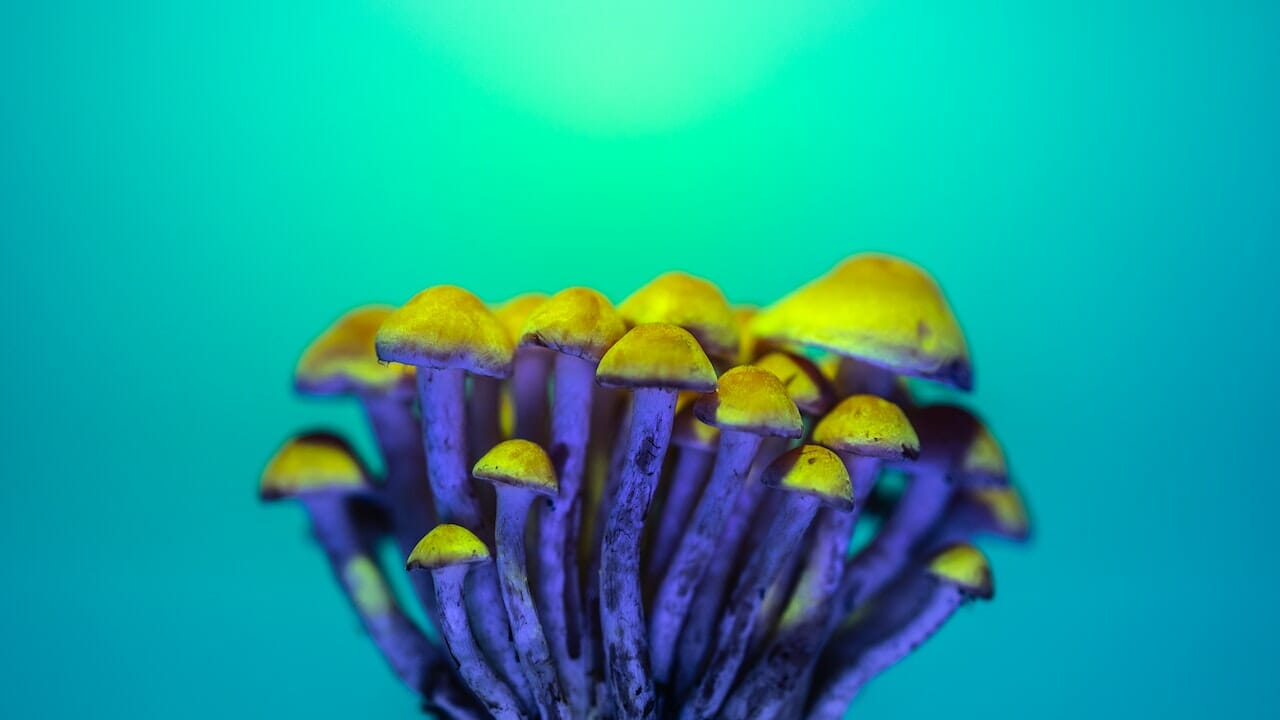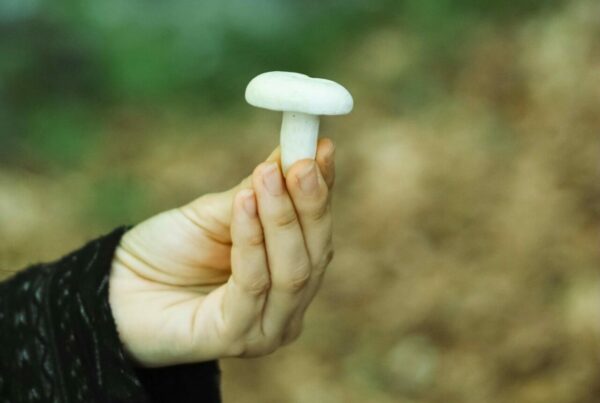Lysergic acid diethylamide (LSD), a potent hallucinogen, is one of the most intensely studied psychedelic substances. Although initially known for its recreational use, LSD is now considered a psychoactive compound with promising mental health benefits. This changed perspective has paved the way for further studies on LSD in more palatable forms, such as LSD edibles.
Key Takeaways:
- LSD, a powerful hallucinogen, originates from the ergot fungus.
- LSD shares commonalities with psilocybin and interacts with the 5-HT2A receptors.
- LSD can trigger visual modifications, mood shifts, ego dissolution, and pseudo-hallucinations.

Decoding LSD
LSD is an extraordinarily potent hallucinogen that can profoundly alter one’s perception of reality and significantly distort sensory experiences. LSD is derived from “ergot,” a fungus prevalent on rye and other grains.
At its molecular core, LSD is a complex chemical belonging to the ergoline family. It consists of a bicyclic hexahydroindole group and a bicyclic quinoline group (lysergic acid). The name ‘Lysergic Acid Diethylamide’ stems from the functional group attached to its nucleus. The structure of LSD closely resembles other ergoline alkaloids, such as ergotamine found in the ergot fungus Claviceps purpurea, and the neurotransmitter serotonin.
The Effects of LSD
Once consumed, LSD penetrates the brain and initiates chemical reactions lasting several hours. LSD can have the following short-term effects:
- Unforeseen mood fluctuations
- Distortion of perception
- Vertigo
- Decreased appetite
- Inability to control movements
The Benefits What Are the Benefits of LSD?
The benefits of LSD are diverse and largely depend on the dosage taken. Most scientific investigations focus on the positive effects associated with lower doses of this psychedelic compound. Here, we explore the potential benefits of LSD use.
Pain Management and Neural Development
Researchers at Maastricht University have discovered that even a single microdose of LSD can induce pain-relief that lasts for a minimum of five hours.
In the Cold Pressor Test, a pain-endurance test where participants dip their hands into 3°C (37.4°F) water for an extended period, subjects who took 20 mg of LSD were able to tolerate the discomfort for 20% longer than the control group. They also reported experiencing less pain and discomfort.
Furthermore, LSD can aid in the development and growth of the brain’s 86 billion neurons. Moderate doses of LSD, ranging from 5 to 20 ug, increase the levels of BDNF in blood plasma. This is important as mood disorders like depression, often associated with neuroplasticity problems, may be mitigated by LSD’s positive impact on neuronal health.
Improvement of Mental Health
Dr. Robin Carhart-Harris from Imperial College London introduced the entropic brain hypothesis. According to this theory, rigid thought patterns, upheld by an overactive default mode network (DMN), can lead to mental health disorders. Psychedelic substances like LSD have the potential to disrupt the DMN, increase brain entropy, and help dismantle negative neural pathways while promoting the creation of positive ones.
In one study involving over 1,000 microdosers, a decrease in depression was observed. Another extensive cross-sectional study showed a drop in negative moods and harmful attitudes, along with an enhancement in open-mindedness and cognitive function.
Therapy for Addiction
A meta-analysis of randomized-controlled clinical trials using LSD in psychiatry indicated that it is most effective for treating alcohol dependency. This observation is further reinforced by the successful results seen in many patients treated for alcoholism by Humphrey Osmond and at the Spring Grove Hospital Centre during the 1950s and 1960s.
Easing End-of-Life Anxiety and Depression
Dr. Peter Gasser discovered that psychotherapy augmented by LSD helped patients with terminal cancer reduce their end-of-life anxiety. Additionally, it amplified their subjective life quality. Presently, a Phase 2 trial is underway to explore the possible effects of LSD therapy on depression.
A Closer Look at LSD Edibles: Composition and Manufacturing
LSD edibles refer to a variety of food and beverage products infused with the hallucinogenic substance, LSD. These edibles come in different forms such as chocolates, candies, baked items, and even unique products like LSD mints.
What They Contain
- LSD: This is the active ingredient that produces hallucinogenic effects. It is carefully measured and incorporated into the edible.
- Edible Base: LSD is usually dissolved or infused into a consumable substance such as a gummy, candy, sugar cube, or other edible materials. These substances act as carriers for the hallucinogenic compound.
- Flavouring and Ingredients: The specific edible product might consist of flavourings, sweeteners, and other ingredients to enhance taste and texture. These include natural or artificial flavours, colours, and sugars, and they can vary significantly.
Manufacturing Process:
- LSD Synthesis: The initial stage involves the chemical production of LSD. This process requires a deep understanding of organic chemistry, along with access to necessary chemicals, equipment, and a laboratory setup.
- Liquid Formulation: Once LSD is synthesized, it is normally turned into a liquid by dissolving it in a solvent. This liquid acts as a concentrated LSD solution.
- Infusion: The liquid LSD is then incorporated into an edible base such as gummy candies, sugar cubes, or blotter paper. The infused base absorbs the liquid, enabling oral consumption of LSD.
Exploring the Psychedelic Effects of Psychoactive Compounds in LSD Edibles
LSD triggers profound visual effects. Colours seem more intense, objects may seem to be encircled by halos or rainbows, and shapes can transform. Regardless of whether their eyes are open or closed, users may experience
Imagine vividly colored geometric patterns that constantly change, among other visual effects. These distortions are known as “pseudo-hallucinations”. Even though individuals are aware that these visions are not reality, they are still a product of the drug’s influence.
LSD offers a path to alter one’s perception of self and environment. This substance can induce diverse mental states. Thoughts might appear clear and meaningful, or they might seem illogical. Other potential impacts include alterations in how time, distance, and body image are perceived. The boundary between one’s self and the external world can appear indistinct. Some people report experiencing synesthesia, such as visualizing music or hearing colors.
Suggested LSD Products
There’s a wide variety of LSD edibles available, but it’s vital to buy from a trusted dispensary. It’s important to verify that the edibles contain LSD, not other substances like PCP (embalming fluid), ecstasy, or ketamine.
Deadhead Chemist – LSD Infused Gummies
Deadhead Chemist offers LSD-infused gummies, each containing 100 micrograms (ug) of LSD, in a range of flavors. Each package includes one gummy, which has demonstrated potential benefits for individuals suffering from conditions like obsessive-compulsive disorder (OCD), post-traumatic stress disorder (PTSD), alcohol addiction, depression, and cluster headaches.
Deadhead Chemist – Mint Tea
Deadhead Chemist’s raspberry mint tea presents a tastier and more enjoyable way to experience the effects of LSD. LSD and other psychedelics imitate the serotonin neurotransmitter and enhance the brain’s flow state.
Earthly Delights – Candy Flips
Candy flipping rose to fame during the rave culture of the late 1980s. Today, thrill-seekers and party-goers continue to enjoy the combined effects of these two remarkable substances. Users often experience intense feelings of love and unity, along with stunning visual effects like color intensification, object metamorphosis, and intricate geometric patterns.
Concluding Remarks
LSD is known for its transformative experiences throughout history. As our scientific comprehension of this substance has grown, so has its popularity, leading to the introduction of LSD edibles. These flavorful consumables present a fresh possibility for users.
Embark on a safe and enjoyable journey with LSD through carefully measured doses.
As the leading provider in Canada of superior shrooms online, Momentum Mushroom Canada presents an extensive variety of LSD-laced edibles and cannabis products. Peruse our assortment at your own pace, add your chosen items to your cart, and unwind at home while we handle the delivery. We also offer a broad range of psilocybin shrooms, edibles, beverages, and capsules for your convenience. Don’t forget to check our LSD delivery page for more details!
Frequently Asked Questions
What sets LSD apart from psilocybin?
CHARACTERISTICS LSD PSILOCYBIN Origin A semi-synthetic chemical compound Naturally occurring in fungi Available Forms Pills, microdots, liquid, gummies, blotter paper Dried mushrooms, capsules, teas, chocolates Potency Highly potent, doses in micrograms (ug) Varies based on mushroom species and preparation Onset and Duration Quick onset (15-60 minutes), short duration (3-5 hours) Gradual onset (30-60 minutes), moderate duration (4-6 hours)
How can one avoid undesirable experiences with LSD?
- Choose Your Setting Wisely
- Prepare Your Mindset
- Start with a Low Dose
- Arrange for a Trip Supervisor
- Create a Peaceful Environment
- Use Deep Breathing and Grounding Techniques
- Accept and Let Go
How long do the effects last?
The acid’s effects will start to become noticeable between 30-60 minutes after ingestion. Those who are more sensitive to psychedelics may begin to feel the effects Within about 15 minutes, you’ll be able to discern if you’re under the influence of acid. The climax of your journey will occur roughly three hours into the experience. You might feel as though time is moving slower, and you may experience hallucinations.
Don’t worry, it’s normal to feel detached from reality during this period. The peak phase lasts between 3 to 5 hours, followed by a winding down phase that continues for an additional 3 to 5 hours.
How does LSD interact with the human body?
LSD primarily engages with the brain’s serotonin system, binding to and activating the 5-HT2A receptor. This interaction initiates a chain of neurochemical and physiological responses. The effects of LSD, which can differ significantly, can be shaped by various factors.
Does LSD come in forms other than edibles?
Yes, LSD is available in multiple forms. The four primary forms of LSD include blotter paper, liquid solutions, tablets or microdots, and gelatin sheets.
Suggested Readings:
| CHARACTERISTICS | LSD | PSILOCYBIN |
| Origin | A semi-synthetic chemical compound | Naturally occurring in fungi |
| Available Forms | Pills, microdots, liquid, gummies, blotter paper | Dried mushrooms, capsules, teas, chocolates |
| Potency | Highly potent, doses in micrograms (ug) | Varies based on mushroom species and preparation |
| Onset and Duration | Quick onset (15-60 minutes), short duration (3-5 hours) | Gradual onset (30-60 minutes), moderate duration (4-6 hours) |



